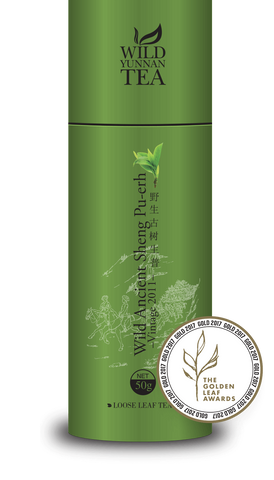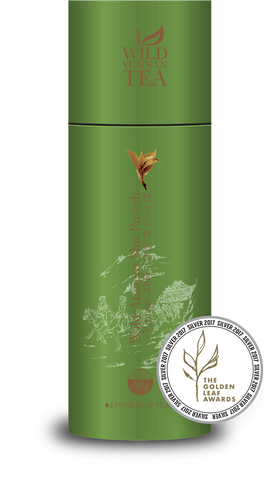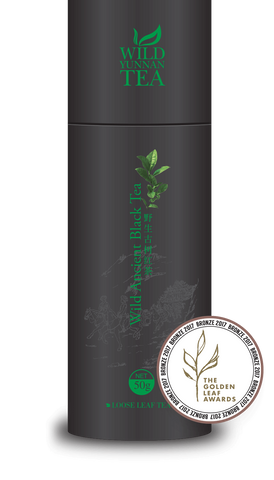How To Prepare Wild Yunnan Tea

Brewing Temperature
Lower Temperature
White teas have delicate leaves, and therefore require below boiling water temperatures between 75 and 85 degrees Fahrenheit. Too high of a temperature will cook the leaves and ruin their delicate flavours.
Higher Temperature
Wild Organic Black and Gold Label Wild Organic Black, Wild Organic Sheng Pu-erh and Wild Organic Shu Pu-erh teas brew best at a water temperature between 85 and 95 degrees Fahrenheit.
Equipment Guide

Health professionals worldwide recognize the amazing medicinal qualities of the various teas leaves available. But you have to brew correctly, not only to get the best taste, but also to reap the most from those potential health advantages. Some basic equipment you will need includes the right teapot and a proper kettle.
If you plan to make the jump to becoming a religious tea drinker, you need to forget about tea bags altogether. Loose leaf tea will consist of either entire leaves of the smaller size, big pieces of the larger leaves, or sometimes a combination thereof whereas tea bags contain tiny pieces of leaves or what are known as “fanning,” basically a dust. While the tea bag may ensure that the drink brews more quickly, it will also lack the subtlety and complexity of the beverage when made from loose leaf, and will generally have a harsher flavour. Additionally, most loose leaf varieties can be re-steeped for multiple uses, something that you simply cannot do with most tea bags.
How much tea to use?
The following measurements are for a standard 28 fl.oz or 400ml (4 Cups) teapot.
- White tea varieties require 2 teaspoons
- Black tea varieties require 2 teaspoons
- Sheng Pu-erh requires 1½ teaspoons
- Shu Pu-erh requires 1½ teaspoons
Steeping Equipment
You have a few choices when it comes to how to get your leaves ready to steep.
Purchase a teapot with a built-in strainer
Purchase a tea ball or infuser just for your cup and then you can pour the water directly from the kettle into the cup and bypass the need for a pot altogether. This is nice if you’re just brewing for yourself the majority of the time. Put the desired amount of tea leaves directly into your cup however you’ll be careful not to drink the leaves themselves which for some is no issue as the majority of the leaves sink to the bottom of the cup anyway and will be left behind with the dregs of the drink.
Heat Your Water
If you’re a novice tea drinker, you may be under the impression that all you need to do is boil the water and pour it right over the leaves however there is not a single type of tea that should be made using water at boiling temperature. Based on the type you’re brewing, you’ll need to heat water to a very specific temperature to get the best tasting cup from that particular type.
Heating Equipment
For heating water, you can either use a tea kettle on the stove which may take 5-10 minutes to boil, or you can use an electric water kettle which can be as short as 2-3 minutes to boil. Most folks who regularly consume this fine hot beverage normally opt for the electric kettle. If tea is a part of your regular routine and you drink several cups throughout the day, it would make sense to invest in one. You can either purchase a fancy kettle with different temperature settings for different varieties of tea, purchase a basic kettle and a thermometer or you can learn to sit the kettle once boiled to allow the water to cool a little before pouring over your tea leaves.
Water Quality

Around the world water is considered the elixir of life. Water is the fundamental ingredient in a tea brew the other is the tea leaves. It is therefore very important to use good quality water when it comes to brewing a great cup of tea. The process applied to the leaves, from the time they are first picked, focus on the extraction of water in various ways and to varying degrees so during the tea brewing process, we are re-infusing the leaves with water. It should be therefore considered important that we should strive to add the quality of water that compliments the tea in every way, rather than overwhelming the flavour of the tea and even destroying the tea itself with bad quality water. The best sources of water can be found from slow moving mountain water, from the middle of mountainous rivers, artesian basins, underground aquifers and well water so long as they are all away from civilised and industrialised areas where contaminants can enter.
Since water quality has a profound effect on the taste of tea, it’s vital to know more about the characteristics important to brewing with it. The flavour and aroma of the tea can very easily be distorted and overwhelmed by the quality and character of the water.
Four important qualities in water to consider include:
- pH level,
- oxygenation, and
- chemicals & mineral content
pH Level
The pH level of the water tells us whether it is alkaline or acidic, with a level of 7 being neutral. Pure water is neutral, and a level near this is ideal as a starting point for tea. Water with a pH less than 7 is considered acidic; greater than 7 is considered alkaline. As a general guideline, both tap and spring water tend to be alkaline. Tap water is often deliberately made alkaline to deter pipe corrosion. Alkaline water typically doesn't produce as flavoursome a tea as does more neutral water. Tea itself is mildly acidic, so the ideal pH of a brewed cup is about 5.
Oxygenation
Fresh natural sources of water contain a healthy amount of oxygen that helps infuse the tea leaves to their best effect. Oxygen aerates the tea and contributes to a full depth of flavour. It is not recommended to use water that has been standing in your kettle overnight or water that has already been boiled. In both cases the oxygen has been depleted resulting a flat tasting brew.
Chemical & Mineral Content
Many would assume tap water to be fine for a cup of tea but it can vary greatly from place to place, not only in terms of pH. Most tap water contains more chemicals. Mineral content and chemicals impact the taste and odour of plain water, so it stands to reason they will also affect the tea in your cup. Some minerals are desirable and react favourably with tea leaves. Chemicals and minerals in your water have a noticeable impact on tea leaves which can affect the taste and some of which can destroy all the nutrient goodness. Look for visual cues such as cloudiness in your brewed cup, surface scum, or a dull surface. All of these are indications of unwanted chemical or mineral reactions and less than optimal water quality.
The following things can indicate poor water quality mineral or chemical content:
- slight salty flavour—might indicate the presence of sodium chloride or be evidence of chemically softened water,
- bleach-like smell—likely from the chlorine used to sanitize the water, or
- smell of rotten eggs—probably means there is sulphur in the water supply.
By learning to use these quality measures, you can now take steps to make a noticeably better cup of tea!
Time to Steep

Most teas can be re-steeped multiple times within hours of the initial infusion. The science of tea tasting is to do what tastes best for your taste buds. Below is a guideline to get you on the right track.
Pour the heated water over the tea, cover, and infuse to taste. Different teas take well to different infusing times.
Before brewing pu-erh tea you should rinse the tea. This means to pour the heated water over the tea and allow the tea to release any staleness, from the fermentation period, to wash away from the tea leaves. This should only take around 10 -15 seconds before emptying out the water again. Experiment to find the best time for your brew, but take care – don’t steep for too long or you’ll find your tea will begin to taste a little bitter.
Brewing times for Wild Yunnan Teas
- Wild Ancient Black tea & Wild Ancient Shu Pu-erh - between 3-5 minutes
- Wild Ancient Sheng Pu-erh - between 4-5 minutes
- Wild Ancient White tea - between 4-5 minutes
Brewing Pu-erh tea correctly
- Choose the Pu-erh tea you would like to brew and place it in your teapot.
- Rinse the leaves once by covering them in the hot water for between 4 to 8 seconds then discard the water. This is to rid the tea of any impurities and wash away a potentially stale musky taste which results from the tea's fermentation stage.
- Refill your teapot with hot water to brew the leaves in. The hotter the temperature of the water, the stronger the resulting brew will become, so you can control the resulting tea's flavor and depth.
- Brew your Pu-erh tea for approximately 3-5 minutes, depending on the variety and your preference of strength.
Enjoy Your Tea

Remove the tea strainer for the leaves when your tea is to your satisfaction. Pour the steaming tea into a cup and let it cool for a moment before enjoying the complexity and character of your perfection in a cup.
To get the most out of your tea experience with us, ubscribe to our Tea Network for videos, articles, tea workshops, events and more.


